#International Union for Conservation of Nature’s Red List of Threatened Species
Text

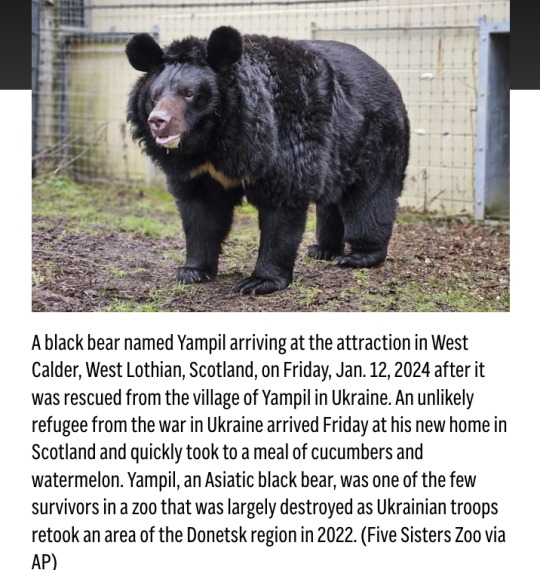
By Brian Melley, AP News
13 January 2024
LONDON (AP) — An unlikely refugee from the war in Ukraine — a rare Asiatic black bear — arrived at his new home in Scotland on Friday and quickly took to a meal of cucumbers and watermelon.
The 12-year-old Yampil was named for a village in the Donetsk region where he was one of the few survivors found by Ukrainian troops in the remains of a bombed-out private zoo.
Yampil, who had previously been called Borya, was discovered by soldiers who recaptured the devastated city of Lyman during the Kharkiv counteroffensive in the fall of 2022, said Yegor Yakovlev of Save Wild, who was among the first of many people who led the bear to a new life.
The bear was found in a menagerie that had long been abandoned by its owners.
Almost all the other animals had died of hunger, thirst or were struck by bullets or shrapnel and some were eaten by Russian troops.
Yampil narrowly missed the same fate, suffering a concussion from a projectile that landed nearby.
“The bear miraculously survived,” said Yakovlev, also director of the White Rock Bear Shelter, where the bear recovered.
“Our fighters did not know what to do with him, so they started looking for rescue.”
What followed was an odyssey that your average bear rarely makes, as he was moved to Kyiv for veterinary care and rehab, then shipped to a zoo in Poland, then to an animal rescue in Belgium, where he spent the past seven months, before landing in the United Kingdom.
Brian Curran, owner of Five Sisters Zoo in West Calder, Scotland, said his heart broke when he learned of the plight of the threatened Asiatic black bear.
“He was in terrible condition; five more days and they wouldn’t have been able to save him,” Curran said. “We were just so amazed he was still alive and well.”
The bear was skinny but not malnourished when he was found, said Frederik Thoelen, a biologist at the Nature Help Center in Belgium.
He now is estimated to weigh a healthy 440 pounds (200 kilograms), Thoelen said.
The nature center in Belgium, which usually treats injured wildlife and returns them to their natural settings, has taken several animals rescued from the war in Ukraine, including a wolf, a caracal cat and four lions, though those animals had not experienced the ordeal Yampil endured.
It was remarkable how calm Yampil was when he arrived in Belgium, Thoelen said.
The bear was trained in the past two weeks to move from his enclosure to the crate that would transport him across Belgium to Calais, France, then across the English Channel on a ferry to Scotland.
Pastries from a local bakery were used for good measure to lure him Thursday into the cage, where he was sedated for the journey.
“We want to use the food that he likes most, and for most bears — and for people also — it’s sweet, unhealthy foods,” Thoelen said.
Thoelen had a sense of the bear’s weight as he drove the crate to the port.
“Every time when we had a red light or a traffic jam, when the bear moved a little bit, you could feel the van moving also,” he said.
“You could feel it was a heavy animal in the back of the car.”
Yampil arrived at the zoo about 15 miles (25 kilometers) west of Edinburgh and immediately made himself at home.
He feasted on cukes — said to be his favorite food — and melon, said Adam Welsh, who works at Five Sisters.
The Asiatic black bear is listed on the International Union for Conservation of Nature’s Red List of Threatened Species as vulnerable to extinction in the wild, where it can be found in central and southern Asia, Russia, and Japan.
It’s known for the distinctive white crescent patch on its chest that gives it the nickname moon bear. It can live for up to 30 years in zoos.
It’s not clear if the bear will go into hibernation. The winter has been warmer than usual but colder days are on the horizon.
The zoo has other bears, but Yampil is the only Asian bear and unique in other ways.
“We’ve had circus bears, for example, that have been rescued,” Welsh said.
“We’ve had bears rescued from places like roadside restaurants where they’ve been used as kind of roadside attractions and been kept in subpar conditions. But this is the first time that we’ve worked with an animal that’s been rescued from a war zone.”
youtube
Scottish zoo welcomes black bear which survived war in Ukraine
13 January 2024
🖤🐻🤎
#Asiatic black bear#Ukraine#Scotland#Yampil#Borya#Save Wild#White Rock Bear Shelter#Five Sisters Zoo#Nature Help Center#Belgium#Poland#International Union for Conservation of Nature’s Red List of Threatened Species#moon bear#save animals#protect wildlife#threatened species#refugee bear#private zoo#Youtube
181 notes
·
View notes
Text
IUCN Director General Message for World Wildlife Day 2024.
youtube
Message for World Wildlife Day 2024 by the International Union for Conservation of Nature (IUCN), Director General Mr. Grethel Aguilar.
#IUCN#world wildlife day#wildlife#3 march#Red list of threatened species#statements#International Union for Conservation of Nature (IUCN)#IUCN Species Survival Commission#IUCN Pangolin Specialist Group#Youtube
0 notes
Text

A Male Saiga Antelope in Russia's Black Land National Park. These highly social antelope live in herds. Photograph By Valeriy Malee/Nature Picture Library
This Floppy-Nosed Antelope Was Nearly Gone. 20 Years Later, It’s Thriving.
Less than a decade ago, more than half of the world’s saiga antelope were lost to a mysterious disease. Its comeback is a rare and phenomenal conservation success.
— By Jason Bittel | December 14, 2023
Just two decades ago, it seemed as if we might need to write a eulogy for the saiga antelope.
Cut down by widespread poaching and waves of disease, by 2003, just 6 percent of the floppy-nosed ungulates remained in Kazakhstan, Mongolia, Russia, and Uzbekistan.
But today, scientists are rejoicing at the saiga’s unlikely rebound.
There are now 1.9 million saiga antelope across Eurasia, according to the most recent estimates released this week. So many saiga, in fact, that the International Union for Conservation of Nature is upgrading the Red List status for the species from critically endangered to near threatened.
“There's a lot of conservation doom and gloom, and there isn't very much attention paid to conservation successes,” says E.J. Milner-Gulland, a conservation scientist at the University of Oxford and co-founder of the U.K-based Saiga Conservation Alliance. “It’s quite a vindication of 20 years of hard work by lots of people.”
To get a sense of just how far this species has come, in 2015, more than half of the worldwide population of saiga antelope were lost to a mysterious blood disease.
“This is phenomenal news,” says Joel Berger, an ecologist at Colorado State University and a senior scientist at the Wildlife Conservation Society, in an email.
“At a time when so many species and populations are in deep swan dives, to witness the recovery of saiga—a species deserving of more recognition in its own right—is something we all need to celebrate,” he says.
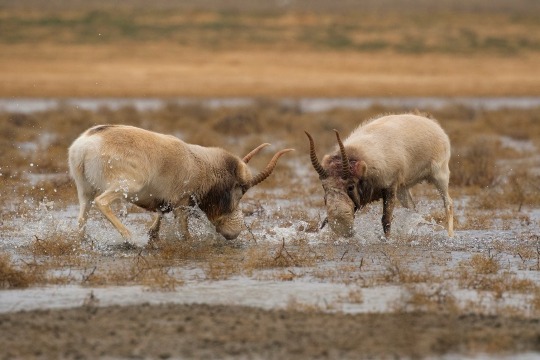
Male Saiga Antelope Battle in Black Lands National Park. Males and their horns are a specific target of poachers. Photograph By Valeriy Malee/Nature Picture Library
The Saiga’s Downward Spiral
Those who have been paying attention to the saiga’s saga know that it’s been a wild ride.
“Twenty years ago, it had the fastest increase in threat status of any mammal,” says Milner-Gulland. “The population had plummeted by more than 90 percent over a really short time of a few years, so it went straight in at critically endangered.”
As for what happened, Milner-Gulland explains that the saiga’s downfall can be attributed to several factors. For starters, saiga horn has great value in China, Singapore, Vietnam, and Malaysia as a component in traditional medicine. And this demand, coupled with the breakup of the Soviet Union, led to a dramatic rise in hunting.
It’s a Symbol of the Wild Steppe, of Independence and Freedom.
— E.J. Milner-Gulland, Conservation Scientist at the University of Oxford
“The economies of these countries basically collapsed,” she says. “And they were living in very harsh conditions on the steppe. So they turned to poaching.”
Fencing along the border between Kazakhstan and Uzbekistan also put a barrier in the middle of the saiga’s migratory route, while infrastructure development cut into saiga habitat. Finally, an unknown trigger turned a naturally occurring microbe in the saiga’s characteristic nose into a virulent pathogen, leading to the mass die-offs.
It’s for all these reasons that the IUCN has chosen not to de-list the saiga completely.
“The near threatened category is right for the saiga, because we know that at any time, we could just get large numbers of them dropping dead again,” says Milner-Gulland. “They are very vulnerable.”
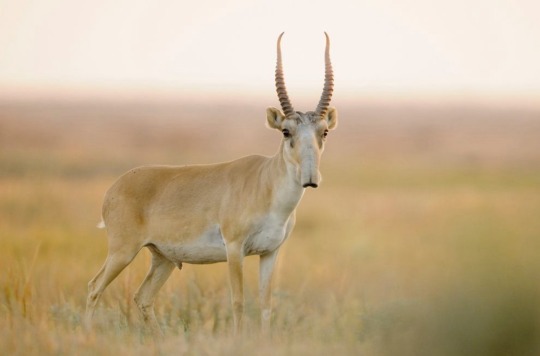
A Path to Recovery
Just as the threats to the saiga were multi-faceted, so too have been the efforts to protect the species, which are important seed dispersers and grazers that contribute to plant biodiversity.
For instance, an international collaboration between countries where saigas roam, countries that traditionally consume saiga products, and other stakeholder nations, including the United States, led to a memorandum of understanding in 2006 to conserve the species, restore its habitat, and restrict harvest to a sustainable level.
For its part, Kazakhstan’s government focused on stronger anti-poaching measures, including law enforcement to prevent saiga hunting. The Saiga Conservation Alliance supplied financing for gasoline, uniforms, motorbikes, and shelters for those rangers, who live in the harsh, windswept grasslands. Customs agents also improved detection of saiga products leaving the country as part of the illicit wildlife trade. Lastly, the country designated multiple protected areas totaling more than 12 million acres of saiga antelope habitat.
Now that economic conditions have leveled out and local people don’t have to choose between their own survival and saving saiga, there has also been a dramatic shift in support for the species.
“The thing about saiga is the local people really love it,” says Milner-Gulland. “It’s a symbol of the wild steppe, of independence and freedom.”
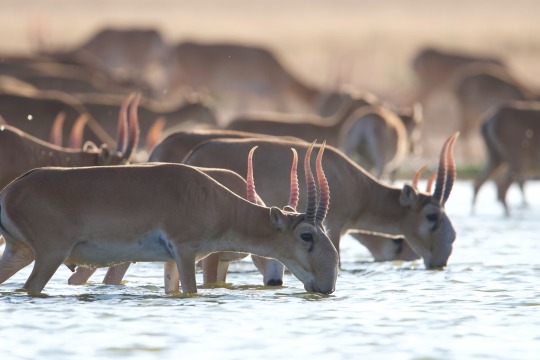
Saiga (Drinking on Southern Russia's Astrakhan Steppe) can migrate up to 600 miles over summer and winter. Photograph By Valeriy Malee/Nature Picture Library
#Animals 🦓 🦒 🐘#Floppy Nosed Antelope#Kazakhstan 🇰🇿 | Mongolia 🇲🇳 | Russia 🇷🇺 | Uzbekistan 🇺🇿#University of Oxford#Saiga Antelope#China 🇨🇳 | Singapore 🇸🇬 | Vietnam 🇻🇳 | Malaysia 🇲🇾#E.J. Milner-Gulland | Conservation Scientist | University of Oxford
38 notes
·
View notes
Photo
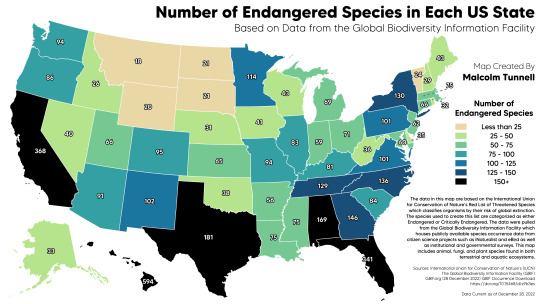
The Number of Endangered Species in Each US State
by u/malxredleader
Sources: IUCN, GBIF
Tools: R, QGIS
Notes: This map depicts the number of endangered species in each US state. The data in this map are based on the International Union for Conservation of Nature’s Red List of Threatened Species which classifies organisms by their risk of global extinction. The species used to create this list are categorized as either Endangered or Critically Endangered. The data were pulled from the Global Biodiversity Information Facility which houses publicly available species occurrence data from citizen science projects such as iNaturalist and eBird as well as institutional and governmental surveys. This map includes animal, fungi, and plant species found in both terrestrial and aquatic ecosystems. I created an older version of this map around two years ago and thought that it was due for an upgrade. I released this map today since it's the 50th anniversary of the signing of the US Endangered Species Act into law. We've come a long way, but there is still more to be done in the way of protecting species from extinction. As always if you have any praise, constructive criticism or questions, let me know! I love hearing from you all!
153 notes
·
View notes
Text
Extinction Declared
A species of ray, so rare it has only ever been recorded once back in the late 1800s, has been declared extinct after an assessment by an international team led by Charles Darwin University (CDU). The loss of the Java Stingaree, a small relative of stingrays, is the first marine fish extinction as a result of human activity.
This news comes as the International Union for Conservation of Nature (IUCN) released its updated Red List of Threatened Species.
The Java Stingaree (Urolophus javanicus) was known only from a single specimen collected in 1862 from a fish market in Jakarta, Indonesia.
The team conducted new modeling encompassing all available information on the species which has revealed the Java Stingaree as extinct.CDU Ph.D. Candidate and lead assessor, Julia Constance said a range of issues had contributed to the Java Stingaree's disappearance.
"Intensive and generally unregulated fishing is likely the major threat resulting in the depletion of the Java Stingaree population, with coastal fish catches in the Java Sea already declining by the 1870s," Ms Constance said.
#enviromentalism#ecology#marine life#Java Stingaree#extinction#endangered species#extinct animals#human activity
27 notes
·
View notes
Photo

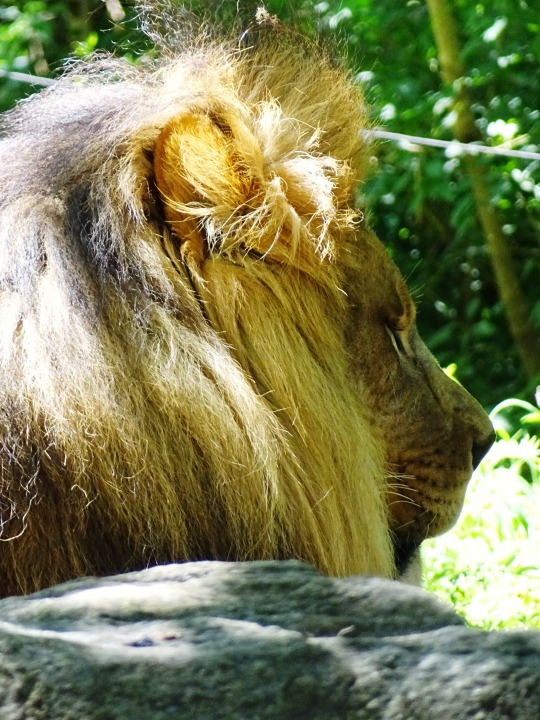




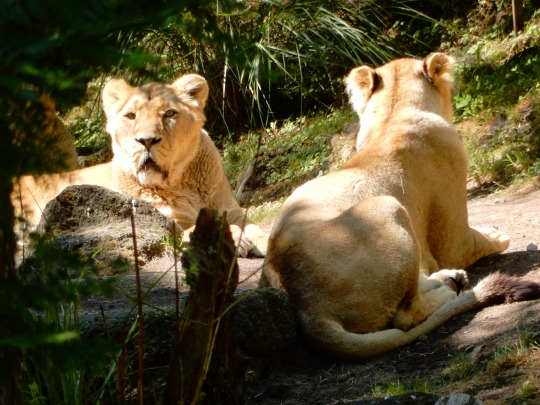
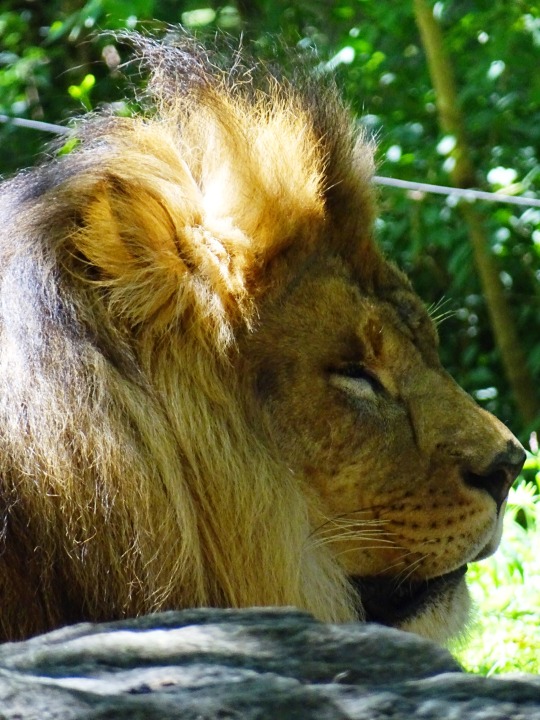

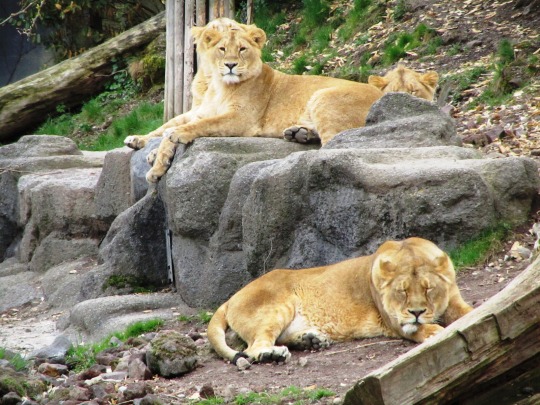
World Lion Day
World Lion Day on August 10 aims to raise awareness about the plight faced by lions. Scientifically known as ‘Panthero Leo,’ lions are one of the most well-known and popular animal species out there. They are called the ‘Kings of the Jungle’ due to their arresting and fearsome personalities created by their great bodies and heavy, shiny manes. A lion’s powerful roar is second to none, and it can be heard even five miles away. Owing to the pop culture icons like Simba from “The Lion King”, lions are also loved by children. However, while lions existed in large populations 100 years ago, today, their numbers are just below 50,000 worldwide as a result of poaching and hunting. World Lion Day, therefore, brings attention to this endangered species by raising funds and amping up protective measures.
History of World Lion Day
The first World Lion Day came into being in 2013. It was headed by Dereck and Beverly Joubert, a couple who are passionate about preservation and wild cats. After realizing that lion populations have drastically decreased worldwide, the Jouberts approached “National Geographic” for the brand’s help. Forming a partnership with them, the couple came up with the Big Cat Initiative (B.C.I.) in 2009. The B.C.I.’s main goal would be to protect and preserve the remaining lion species in the world. While aspects like deforestation, climate change, and human intervention may have impacted lion populations, studies have shown that their extremely low numbers may also have to do with ice ages and natural environmental disasters that have led them to becoming secluded in only a few countries of the world, namely India and South Africa. To date, the B.C.I. has made substantial leaps, from getting 150+ grant awards to reducing almost 3,000 threats to 3,000 wild cats to removing 13,000 life-threatening snares.
The lion comes from the ‘Felidae’ family of cats, and it is considered to be an apex predator. It is the second-largest cat weighing around 300 to 600 pounds, with the first being its cousin, the tiger. An average lion’s body is muscular with a short round head and ears, and a tufty tail. Its sex can be identified through its heavy and luscious mane, which are absent on lionesses. Lions also happen to be the only cats who roam around in large groups known as prides. Scientists believe that lions do so because it is easier to catch prey in the wild. Their natural habitats are savannas and grasslands. You will most likely find a pride of lions near water bodies as they strategically wait for prey to come there for a drink and then pounce on them.
World Lion Day timeline
1758 ‘Felis Leo’ is Coined
Carl Linnaeus, a Swedish zoologist and botanist, invents ‘Felis Leo’ as the scientific name of lions.
1996 Vulnerable Species
The lion is placed on the Red List of the International Union for Conservation of Nature due to its African population decreasing by 45% since 1990.
2009 Big Cat Initiative is Formed
Dereck and Beverly Joubert, in partnership with “National Geographic”, start the Big Cat Initiative to save lions.
2013 The First World Lion Day
The B.C.I. announces the first World Lion Day in order to include the world in lion preservation efforts.
How to Observe World Lion Day
Vow to protect lions
Refuse to buy lion products
Donate your assets
No matter how you choose to spend the day, make sure it is worthwhile by vowing to protect lions. Lions are natural predators that are necessary to keep prey populations in check. Apart from such environmental benefits, lions are extremely beautiful and majestic animals that have ruled the pop culture scene for a long time. So, let’s take a vow to be there for them.
Whether you are looking to buy a new bag or coat, or any other similar paraphernalia, make sure you know where it is coming from. Refuse to buy lion products (or other animal skin products) to reduce sales and market value.
Time and money are the most valuable assets you can give in today’s world. Look out for national and international organizations that protect wild cats, and invest in them by donating your money to the cause. If you cannot donate, you can volunteer your time by either helping the organizations with volunteer work or by promoting the organizations in your circles.
5 Facts About Lions That Will Blow Your Mind
Younglings have spots on their skin
Manes change over time
Cubs are raised together
Females are mightier hunters
Heavy and long sleepers
Young lion cubs are born with spots on their coats, but these tend to fade away as they grow older.
A lion’s mane will change color, going from light to dark, as it grows older.
Lion cubs are generally brought up together by all the females in a pride.
Lionesses are better hunters than their male counterparts, and it is for this reason that they hunt 80% to 90% of the time.
Lions will sleep for at least 20 hours a day.
Why World Lion Day is Important
It’s a celebration of lions
It’s a reminder about the importance of preservation
It’s a celebration of the natural environment
For most of us, “The Lion King” was a huge part of our childhood. We rejoiced at the birth of Simba but also grieved with him over his father’s death. Holding such sweet memories and images, we cannot let the beloved animal go extinct. Let’s come together on August 10 to protect lions from all dangers.
Preservation has become a necessity, more now than ever. We cannot hope to live on a peaceful and resourceful Earth if we keep depleting it of its natural resources, be it water, fuel, or animals. We must preserve and protect the Earth for ourselves as well as future generations.
The natural environment has given us countless gifts. From food for taste and survival to medicinal properties to inspiration for technological inventions, nature has continued to reward us since time immemorial. We must therefore honor, respect, and celebrate it.
Source
#Zoo Zürich#2017#Bronx Zoo#my favorite zoo#New York City#summer 2019#original photography#animal#flora#fauna#outdoors#USA#Schweiz#Switzerland#World Lion Day#10 August#WorldLionDay#landmark#tourist attraction#cityscape#nature#vacation#travel#international day
15 notes
·
View notes
Photo
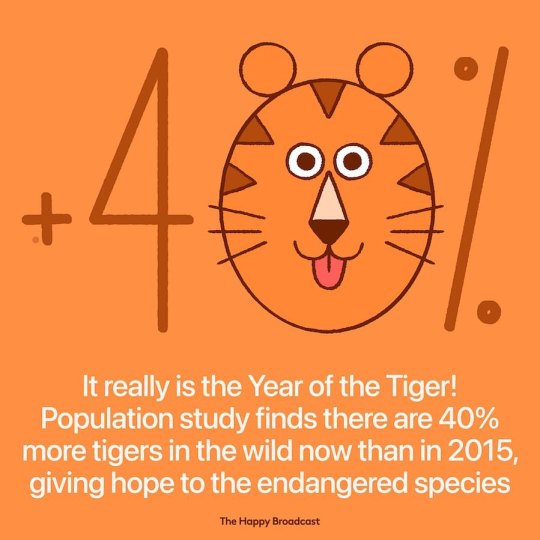
Cat lovers rejoice and drop a 🐯 in the comment box below!
There are more wild tigers in the world than conservationists previously believed.
The news came in an update announced last Thursday to the International Union for Conservation of Nature’s (IUCN) Red List of Threatened Species. While tigers (Panthera tigris) are still considered Endangered, there are 40 percent more of them than was indicated by the last population assessment in 2015. The new IUCN assessment determined that there are now between 3,726 and 5,578 tigers (not including cubs) roaming their range that includes East Asia, Southeast Asia and South Asia, an uptick attributed to more effective monitoring. In fact, the IUCN called it the “first reasonably rigorous estimate of global Tiger numbers, based largely on capture-recapture and occupancy methodologies.” Source: Ecowatch (link in bio) #tiger #conservation #yearofthetiger https://www.instagram.com/p/CgzH6YyO1Ck/?igshid=NGJjMDIxMWI=
58 notes
·
View notes
Text
Six New Species of Rain Frog Discovered
Researchers in Ecuador have discovered six new species of rain frog across two national parks, situated in the Ecuadorean Andes.
The species, all of which were discovered by Ecuadorean herpetologists Jhael Ortega, Jorge Brito and Santiago Ron, were all found within a 20 km radius of deforested areas. Ortega, Brito, and Ron have all recommended that the frogs be added to the International Union for Conservation of Nature's (IUCN) red list of threatened species.
The frogs are all members of the Pristimantis genus, of which there are 550 different species, occupying areas ranging from Honduras through to northern Argentina and Brazil. The largest population of frogs occupies Colombia and Ecuador.
Ron explained that they had decided to name one of the species resistencia (resistance), after all the environmental activists who have been killed in Latin America. More environmentalists were killed in Latin America than in any other region of the world last year, making this a fitting tribute.
Source: BBC News, written by Vanessa Buschschluter
#Science#science communication#scicomm#stem#science education#ecology#environmental science#rain frog#Ecuador#Amphibians
20 notes
·
View notes
Text
https://www.euronews.com/green/2022/08/03/long-lost-iguana-born-again-on-galapagos-island-after-nearly-two-centuries-of-extinction
A lost species of iguana has been ‘born again’ on the Galápagos Islands for the first time in nearly 200 years.
The Galápagos Island land iguana was last spotted on Santiago Island more than 187 years ago. Ecologists determined that the reptiles were locally extinct.
But three years ago, thousands of the creatures were reintroduced to the islands - and new images prove that the lizard is breeding once again.
"Two centuries later, land iguanas are born again on Santiago Island,” a Galápagos National Park spokesperson said.
What is the Galapagos Land Iguana?
The Galápagos Islands used to teem with reptiles.
Located 1000 km west of Ecuador, the archipelago was made famous by English naturalist Charles Darwin’s 1835 expedition.
When Darwin visited, he recorded a massive number of land iguanas. However, they had disappeared by the early 20th century, with local populations decimated by feral pigs and dogs.
The lizards survived on nearby islands, but in small numbers. They are listed as vulnerable on the International Union for Conservation of Nature's (IUCN) Red List of Threatened Species.
To help protect the species, the Galápagos National Park authority decided to reintroduce them to Santiago island.
In 2019, they released more than 3000 of the reptiles on Santiago - a process that Galápagos National Park director Danny Rueda Cordova has described as a “great success.”
"187 years later we witness again a healthy population of land iguanas, with adults, juveniles and neonates on Santiago Island,” he said.
"This is a major conservation achievement and strengthens our hopes of restoring islands that have been severely affected by introduced species.”
What other Galápagos Islands animals are threatened?
The mission to restore the Galápagos Islands is not over.
According to the World Wildlife fund, their unique ecosystems are threatened by illegal fishing, non-native species, and more than 160,000 tourists every year.
However, recent months have seen positive developments on the island. In 2019, scientists spotted the chelonoidis phantasticus - ‘fantastic giant tortoise’ - for the first time in more than a century.
The last known specimen was found in 1906.
"The finding of one alive specimen gives hope and also opens up new questions, as many mysteries still remain," said researcher Adalgisa Caccone.
Last week, scientists discovered two flamingo nests in an isolated lagoon. The birds had not been spotted for more than 20 years.
#good news#nature#animals#conservation and preservation#animal conservation#galapagos islands#galapagos#lizards#iguana#iguanas#reptiles#science#conservation#back from extinction
43 notes
·
View notes
Text
youtube
More From The Twycross Zoo Baby Pileated Gibbon by SloggerVlogger
Here's additional footage featuring the recently born Pileated Gibbon infant at Twycross Zoo, UK. This adorable baby gibbon, born on August 28, 2023, is lovingly cradled by its mother, Valeria. The dad is called Helmut.
Habitat: Pileated gibbons are found in Southeast Asia, primarily in countries such as Thailand, Cambodia, Laos, and Vietnam. They inhabit dense tropical rainforests and are highly arboreal, meaning they spend most of their lives in the trees.
#gibbon #babygibbon #babyanimals
Physical Characteristics:
Pileated gibbons are small apes with distinctive features. They have long, slender arms and no tail.
Their fur colouration can vary, but it often includes black, dark brown, or greyish fur with a lighter face and hands.
One of their most remarkable features is their white cheeks and throat, which make them easily recognizable.
Adult males and females have different fur colourations. Adult males are typically black with white facial markings, while adult females are a lighter colour with dark facial markings.
Behaviour:
Pileated gibbons are known for their incredible agility and ability to swing through the trees using their long arms.
They are highly territorial and communicate with loud vocalizations that can be heard over long distances.
These gibbons are monogamous, forming strong bonds with a single mate. They often have a single offspring, and the family unit is crucial to their social structure.
Their diet primarily consists of fruit, leaves, and other plant materials.
Conservation Status:
Pileated gibbons, like many other gibbon species, face threats such as habitat loss due to deforestation and illegal wildlife trade.
They are classified as Endangered on the International Union for Conservation of Nature (IUCN) Red List of Threatened Species.
Conservation efforts are in place to protect their habitat and combat illegal trade to ensure the survival of these remarkable primates.
Observing Pileated gibbons in their natural habitat or at accredited zoos, like Twycross Zoo, provides valuable insights into their behaviour and highlights the importance of conserving their fragile ecosystems.
#PileatedGibbons #gibbons #babyanimals
Stay connected and never miss a moment! Subscribe to my channel and activate all the notifications to be the first to know when new videos are released.
via YouTube https://youtu.be/0YMQb_Q09tg
2 notes
·
View notes
Text
Endangered Species
Russia – 2021 Europa Stamp -Endangered Animal: Leopard
USA -2023 Forever Endangered Species
This is the whole plate: I only have left the four in the photo above
The Netherlands – 2006 Indian Rhinoceros and Asian Elephant
Japan – Panda and cub (the International Union for Conservation of Nature has changed the panda’s status on the Red List of Threatened Species.no longer endangered. The…
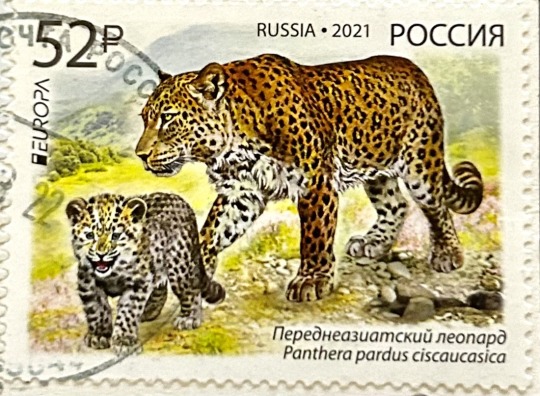
View On WordPress
#animal stamp#brachiosaurus#dinosaur#elephant#endangered#extinct#leopard#panda#rhinoceros#Russia#The Netherlands#USA
2 notes
·
View notes
Video
youtube
Description of the pygmy hippo from Brookfield Zoo:
Brookfield Zoo recently welcomed Banana—a female pygmy hippopotamus who will be turning 3 years old on August 27. As she continues to get acclimated to her new home, guests can see her either inside at the zoo’s Pachyderm House or in her outdoor habitat on the building’s west side.
The zoo has a long history of including the species in its animal collection dating back to when the zoo first opened in 1934. Its most recent pygmy hippo, Adelle, was humanely euthanized in June 2021 due to problems associated with her advanced age—she was a remarkable 44 years old. Much smaller and rarer than the common river hippopotamus, the pygmy hippo weighs between 350 and 600 pounds and can reach a body length of up to about 5.75 feet. Although adapted for spending time in the water, it is less aquatic than its larger relative. Hippos secrete a white or pinkish substance called “blood sweat” from their pores that provides a protective coat like sunscreen on their skin.
The pygmy hippo, whose closest living relative is the whale, is listed as endangered on the IUCN’s (International Union for Conservation of Nature and Natural Resources) Red List of Threatened Species. Found in the interior forests of West Africa’s Ivory Coast, Guinea, Liberia and Sierra Leone, the population is declining mainly due to deforestation of its habitat as well as an increase in development associated with mining. In addition, due to the pygmy hippo’s range being becoming more fragmented, hunters are posing an additional threat to the remaining population, which is estimated to be between 2,000 to 3,000 individuals.
9 notes
·
View notes
Text
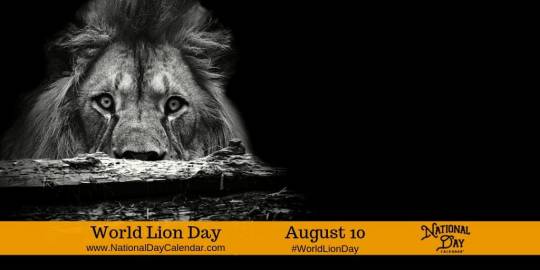
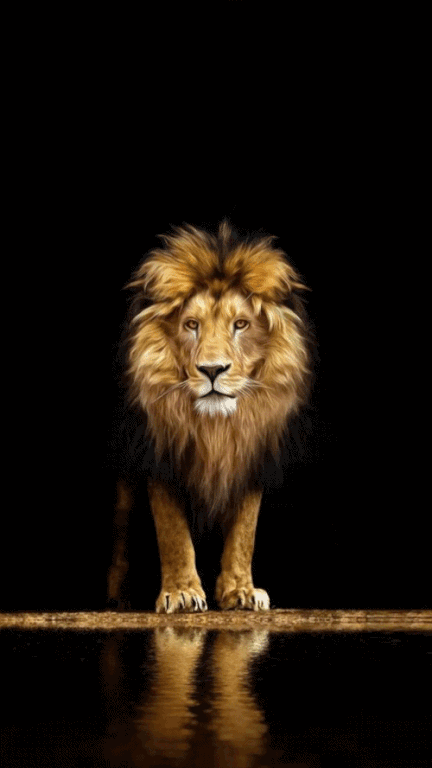
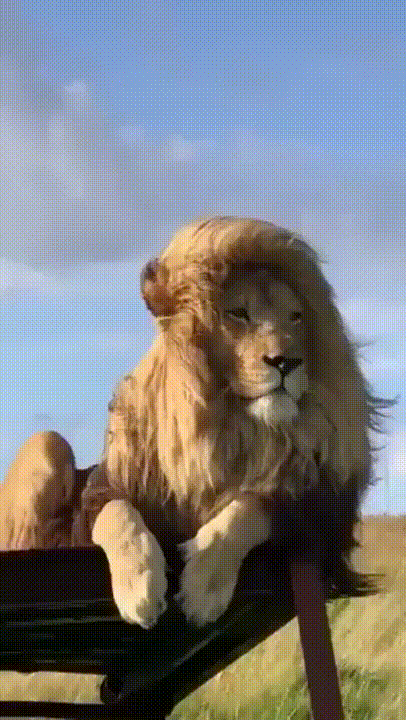
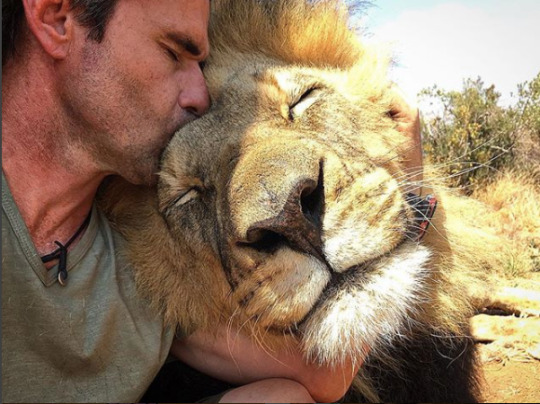



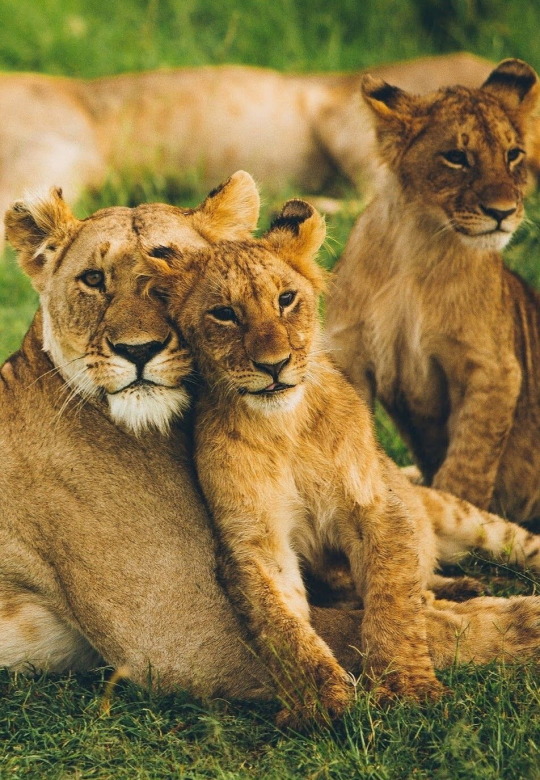
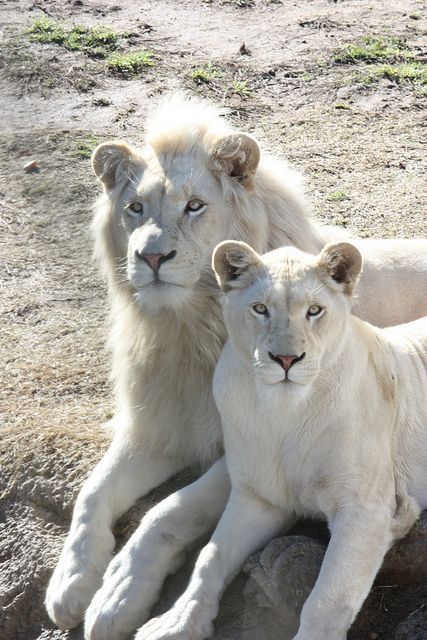
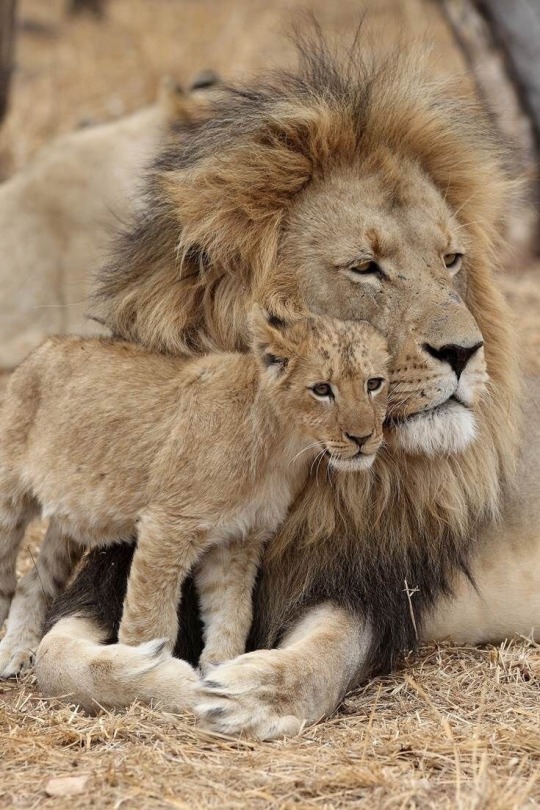
WORLD LION DAY
Today, we invite you to celebrate one of the most majestic species to walk the earth. It’s World Lion Day! Each year on August 10, lion lover’s around the globe use this day to bring awareness to the declining population of lions. Furthermore, we suggest learning about ways to help the preservation of lion habitats, as well.
The lion species, also known as Panthera leo, is one of the largest species on earth. Typically weighing 300 to 550 pounds, the lion can vary from a light buff color to a deep reddish brown color. Surprisingly, there is also the rare white lion found in the wild. Easily recognized by it’s thick mane, the lion is also muscular and has a loud, deafening roar. Unfortunately, as majestic lions my seem, they are slowly disappearing.
As far back as 3 million years ago, lions roamed freely across Africa, Asia, Europe and the Middle East . Today, loins are live freely in their natural habitat in only two locations, Africa and Asia. In addition, some lions are bread in captivity.
Lions are listed as a vulnerable species according to the International Union for Conservation of Nature’s (IUCN) Red List of Threatened Species. Though they are not under the classification of an endangered species, they still face obstacles that endanger their survival.
Currently, there are about 30,000 to 100,000 lions left on earth. In the past few decades, lion populations have decreased almost by half. Trophy hunting and loss of natural habitat are the primary reasons for the diminishing lion population.
OBSERVATION OF #WorldLionDay
Volunteering at a local zoo that houses lions is a great way to learn more about the care required to protect lions. Volunteering or making a donation to a conservation group is another way to show support for the good work organizations do. Whatever you do, don’t forget to share your day’s celebration on social media using #WorldLionDay.
HISTORY OF #WorldLionDay
In 2013, co-founders Dereck and Beverly Joubert of Big Cat Initiative and National Geographic began a partnership to form World Lion Day. Also known as the National Geographic Big Cats Initiative, the partnership aims to protect these wild cats in their natural habitat. Furthermore, the initiative also works on safety measures with communities that live near wild cats.
4 notes
·
View notes
Text
Hope for world's bird populations despite recent 'alarming' report Nathan Howes
Digital Reporter
Wednesday, November 9th 2022, 8:11 am - A global document paints a grim picture for our birds: One in eight species are facing extinction. But there are reasons to be hopeful for their recovery, says a Nature Conservancy of Canada (NCC) biologist.
While it may seem like fate is written for the world's birds, there are reasons to be optimistic for their populations despite a new report that says one in eight species are threatened with extinction.
The fifth edition of State of the World’s Birds assessment was recently released, addressing the current state of birds across the globe. Other key highlights include data from the International Union for Conservation of Nature (IUCN) Red List that shows nearly half (49 per cent; 5,412) of the world's bird species are in decline.
SEE ALSO: Scientists figure out how many birds are in the wild. What's your guess?
The document outlines what the animals tell us about the state of nature and the pressures upon it, as well as the solutions in place and what is needed. It centres on birds because they are an excellent barometer for planetary health, according to BirdLife International, producers of the report.
In a recent interview with The Weather Network, Sam Knight, Nature Conservancy of Canada's (NCC) national science manager and conservation biologist, said she isn't surprised by the findings of the report, but she also acknowledged it is "alarming" since the latest document indicates an even further loss of birds since the 2018 edition.
(Nathan Howes)

"There's [been] a huge jump in the past four years in the number of species that are declining, which tells us that the threats are becoming more and more threatening," said Knight. "I'm perhaps not surprised at seeing the numbers at face value, but then looking into how much they've changed recently really is quite an alarming thing."
'We can tackle this problem'
But the BirdLife International report does offer some glimmer of hope, with IUCN data showing 38 per cent of populations (4,234) are stable and six per cent (659) are increasing.
"There are many species that have been brought back from the brink of extinction. People are becoming more and more attuned with nature and willing to do things to support nature," said Knight.
"I really think that we can tackle this problem."
(Getty Images)
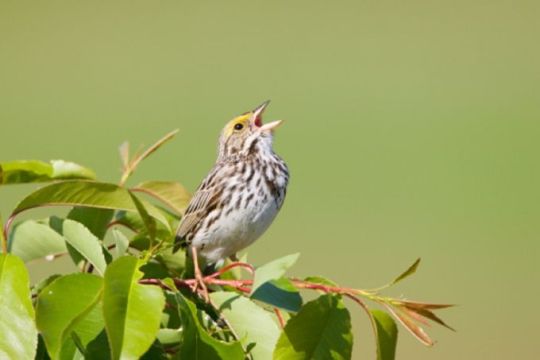
WATCH: City lights are confusing birds, here's how to help our feathered friends
There are many things we can do in our own backyard to reduce the threats to our birds. The primary focuses are keeping cats tethered while they're outdoors or, alternatively, build an enclosure outside so the felines aren't posing a risk to birds while roaming free. The other idea is to proof the home's windows, Knight noted.
In Canada alone, the BirdLife report says an estimated 100-350 birds are killed by cats -- an invasive species -- annually, while approximately 16-42 million of them die in collisions with buildings each year. Birds are disoriented by reflections of open sky or vegetation during the day and artificial light at night.
"Birds are at risk of hitting windows, especially because they don't understand that the reflection of trees and sky isn't real," said Knight. "You can actually put some little patterns or markings all over your windows to be able to reduce that threat on a personal level around your house."
Another thing people can do is plant native plants and create gardens that have flowers that bloom from early in the spring until late into the fall, in an effort to support our pollinators, she said.
(Video)
"Native plants are generally more beneficial than a lot of our garden varieties because garden varieties have often been bred to look good, but it often means they lose some of their nutritional value or some of their nectar sources, for example," said Knight. "And the pollinators [also] appreciate having sources that they know are local."
As well, supporting organizations such as the NCC, either through volunteer work or a donation, is helpful as it needs assistance to be able to do its work, she added.
WATCH: How birds are adapting and lowering risk of extinction Numerous reasons attributed to decline
Going back more than 50 years, North America has lost nearly 3 billion birds (29 per cent) since 1970. The report stated these disappearances have been most "severe" in species found in grasslands and those that migrate, with 419 species losing 2.5 billion individuals and 31 species losing 700 million individuals.
Some of the biggest reasons for the dwindling of the populations include degraded or loss of habitats, logging, pollution, climate change and invasive species, among others.
Out of the aforementioned factors, habitat loss and degradation can be blamed for the biggest losses, the NCC national science manager said, so more needs to be done to prevent them.
She acknowledged the Canadian government's current commitment of protecting 30 per cent of terrestrial lands and waters by 2030 in its 30-by-30 initiative as an example of what the country is doing to help biodiversity.
(Jensen Edwards/Nature Conservancy of Canada)

"So, they have this goal in mind, but they can't tackle this alone. That's where we come in...to be able to help them do this and be able to conserve land we work with," said Knight. "It's not just the government that has to tackle that problem."
The report should also be of concern to people outside of the scientific community because birds play important roles in our ecosystems, Knight said. They are predators that kill agricultural pests, they're pollinators, and they are peaceful and enjoyable to watch for millions of people.
Because of how widely distributed birds are, it is simple to survey them and they are highly responsive to environmental change, she said. "If we know that birds aren't doing so well, this is probably revealing some wider trends in biodiversity loss," said Knight.
UN conference is a 'good opportunity' to start doing more
In December, the 15th Conference of the Parties (COP15) to the United Nations Convention on Biological Diversity (CBD) will be meeting in Montreal to focus on protecting nature and halting biodiversity loss around the world.
(Getty Images/Brian E. Kushner)
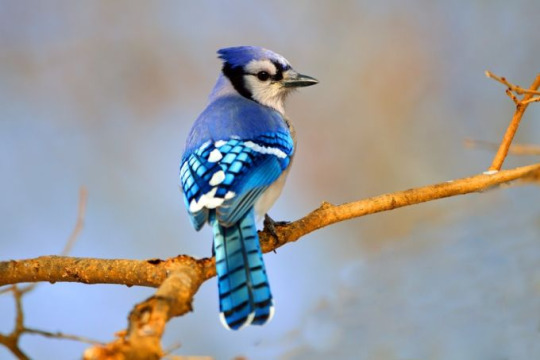
"I'm encouraged by what is going to happen at the United Nations conference in Montreal. I think we have a really good opportunity over the next few months to mobilize and start doing more to support," said Knight.
The gathering is going to be a critical juncture to set environmental priorities for the near future, so everyone will be looking to Montreal to see what we come up with, the NCC biologist stated.
"Anything that is improved for nature, [such as] reducing habitat loss and reversing it, will help birds at the end of the day," said Knight. "Also, by doing things like improving habitat in our own backyard, we can at least support the birds that are still around, which is great, even if we're not really doing quite as much to stop the main threats."
WATCH: Study finds 'The Blob' responsible for the death of millions of birds
Billions of birds vanished since 1970, here's how to curb decline
How to keep the mice out when the season changes
Scientists figure out how many birds are in the wild. What's your guess?
All but gone: 23 species to be delisted, declared extinct by the U.S.
2 notes
·
View notes
Text
Decades of conservation work led by the U.S. Fish and Wildlife Service (USFWS) and supported by American Bird Conservancy (ABC) and partners are paying off for Hawai‘i's Millerbird (Ulūlu). Today, the International Union for Conservation of Nature (IUCN) Red List of Threatened Species announced that the species is being downlisted to Endangered status after being listed as Critically Endangered since 2000. Once found only on the island of Nihoa, a team of scientists and conservationists translocated 50 individuals to Laysan, creating a second, self-sustaining population that significantly decreased this species' risk of extinction.
“The Millerbird translocations were an exciting, collaborative victory for Hawaiian conservation and it is immensely rewarding seeing this recognized by IUCN,” said Chris Farmer, ABC's Hawai‘i Program Director, who participated in the translocations. “The population increase on Laysan will help protect this species' future, and shows that long-term support and commitment can prevent extinctions of any other Hawaiian birds.”
The Millerbird, a small insect-eating warbler, was once found on both Nihoa and Laysan (Kauō) Islands in the Northwestern Hawaiian Islands. Tragically the population on Laysan went extinct by the early 20th century, along with two other endemic bird species, the Laysan Rail and Laysan Honeycreeper, due to loss of vegetation from nonnative rabbits and other introduced mammals. After that, the species was limited to a few hundred individuals on the rocky, 178-acre Nihoa, 650 miles away from Laysan.
To prevent another extinction from happening, a goal was set to establish a second “insurance” population of Millerbirds on Laysan. Rabbits and other invasive mammals were removed from Laysan by 1923. After years of natural regeneration and intensive habitat restoration by USFWS, the island had recovered sufficiently to make it suitable for the Millerbird reintroduction effort
3 notes
·
View notes
Photo

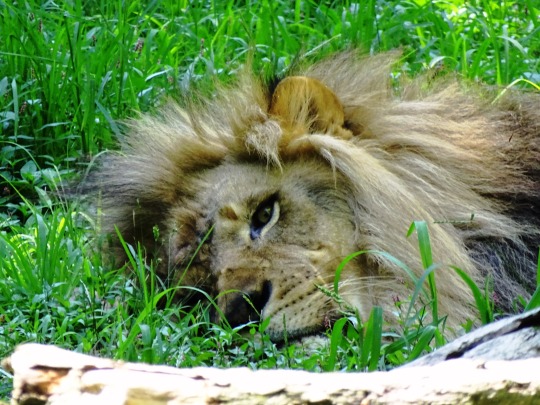








World Lion Day
World Lion Day on August 10 aims to raise awareness about the plight faced by lions. Scientifically known as ‘Panthero Leo,’ lions are one of the most well-known and popular animal species out there. They are called the ‘Kings of the Jungle’ due to their arresting and fearsome personalities created by their great bodies and heavy, shiny manes. A lion’s powerful roar is second to none, and it can be heard even five miles away. Owing to the pop culture icons like Simba from “The Lion King”, lions are also loved by children. However, while lions existed in large populations 100 years ago, today, their numbers are just below 50,000 worldwide as a result of poaching and hunting. World Lion Day, therefore, brings attention to this endangered species by raising funds and amping up protective measures.
History of World Lion Day
The first World Lion Day came into being in 2013. It was headed by Dereck and Beverly Joubert, a couple who are passionate about preservation and wild cats. After realizing that lion populations have drastically decreased worldwide, the Jouberts approached “National Geographic” for the brand’s help. Forming a partnership with them, the couple came up with the Big Cat Initiative (B.C.I.) in 2009. The B.C.I.’s main goal would be to protect and preserve the remaining lion species in the world. While aspects like deforestation, climate change, and human intervention may have impacted lion populations, studies have shown that their extremely low numbers may also have to do with ice ages and natural environmental disasters that have led them to becoming secluded in only a few countries of the world, namely India and South Africa. To date, the B.C.I. has made substantial leaps, from getting 150+ grant awards to reducing almost 3,000 threats to 3,000 wild cats to removing 13,000 life-threatening snares.
The lion comes from the ‘Felidae’ family of cats, and it is considered to be an apex predator. It is the second-largest cat weighing around 300 to 600 pounds, with the first being its cousin, the tiger. An average lion’s body is muscular with a short round head and ears, and a tufty tail. Its sex can be identified through its heavy and luscious mane, which are absent on lionesses. Lions also happen to be the only cats who roam around in large groups known as prides. Scientists believe that lions do so because it is easier to catch prey in the wild. Their natural habitats are savannas and grasslands. You will most likely find a pride of lions near water bodies as they strategically wait for prey to come there for a drink and then pounce on them.
World Lion Day timeline
1758 ‘Felis Leo’ is Coined
Carl Linnaeus, a Swedish zoologist and botanist, invents ‘Felis Leo’ as the scientific name of lions.
1996 Vulnerable Species
The lion is placed on the Red List of the International Union for Conservation of Nature due to its African population decreasing by 45% since 1990.
2009 Big Cat Initiative is Formed
Dereck and Beverly Joubert, in partnership with “National Geographic”, start the Big Cat Initiative to save lions.
2013 The First World Lion Day
The B.C.I. announces the first World Lion Day in order to include the world in lion preservation efforts.
How to Observe World Lion Day
Vow to protect lions
Refuse to buy lion products
Donate your assets
No matter how you choose to spend the day, make sure it is worthwhile by vowing to protect lions. Lions are natural predators that are necessary to keep prey populations in check. Apart from such environmental benefits, lions are extremely beautiful and majestic animals that have ruled the pop culture scene for a long time. So, let’s take a vow to be there for them.
Whether you are looking to buy a new bag or coat, or any other similar paraphernalia, make sure you know where it is coming from. Refuse to buy lion products (or other animal skin products) to reduce sales and market value.
Time and money are the most valuable assets you can give in today’s world. Look out for national and international organizations that protect wild cats, and invest in them by donating your money to the cause. If you cannot donate, you can volunteer your time by either helping the organizations with volunteer work or by promoting the organizations in your circles.
5 Facts About Lions That Will Blow Your Mind
Younglings have spots on their skin
Manes change over time
Cubs are raised together
Females are mightier hunters
Heavy and long sleepers
Young lion cubs are born with spots on their coats, but these tend to fade away as they grow older.
A lion’s mane will change color, going from light to dark, as it grows older.
Lion cubs are generally brought up together by all the females in a pride.
Lionesses are better hunters than their male counterparts, and it is for this reason that they hunt 80% to 90% of the time.
Lions will sleep for at least 20 hours a day.
Why World Lion Day is Important
It’s a celebration of lions
It’s a reminder about the importance of preservation
It’s a celebration of the natural environment
For most of us, “The Lion King” was a huge part of our childhood. We rejoiced at the birth of Simba but also grieved with him over his father’s death. Holding such sweet memories and images, we cannot let the beloved animal go extinct. Let’s come together on August 10 to protect lions from all dangers.
Preservation has become a necessity, more now than ever. We cannot hope to live on a peaceful and resourceful Earth if we keep depleting it of its natural resources, be it water, fuel, or animals. We must preserve and protect the Earth for ourselves as well as future generations.
The natural environment has given us countless gifts. From food for taste and survival to medicinal properties to inspiration for technological inventions, nature has continued to reward us since time immemorial. We must therefore honor, respect, and celebrate it.
Source
#World Lion Day#WorldLionDay#10 August#Bronx Zoo#my favorite zoo#New York City#USA#original photography#summer 2019#close up#travel#flora#fauna#outdoors#tourist attraction#Zoo Zürich#Zurich#Schweiz#Switzerland#Asiatic lion#animal#big cat#male#female#nature#tree#international day
2 notes
·
View notes